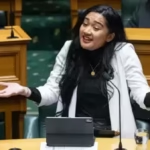Introduction
In a move that has reignited debate over immigration and national security, former President Donald Trump, now running for a second term, announced a new travel ban on citizens from 12 countries, primarily in Africa and the Middle East. Citing security concerns, document fraud, and visa overstays, the ban is set to take effect this Monday. But what specifically led to the inclusion of each nation? Here’s a breakdown.
1. Afghanistan

Trump’s proclamation labels Afghanistan a threat due to the Taliban’s rule and the country’s designation as a Specially Designated Global Terrorist (SDGT) entity. The lack of reliable civil documentation systems and a high number of visa overstays contributed to its inclusion.
2. Iran
Iran remains designated a state sponsor of terrorism by the U.S. Trump cites its alleged support for groups like Hezbollah and Hamas and accuses it of failing to cooperate with deportations. Ongoing nuclear tensions have also played a role in the decision.
3. Somalia
Described by Trump as a “terrorist safe haven”, Somalia is under fire for weak governance, a lack of control over territory, and refusal to accept deported nationals. The country’s challenges with issuing credible passports are also noted.

4. Libya
Libya’s history of terrorism and instability in issuing travel documents have placed it on the banned list. Trump’s proclamation highlights the “security threat” posed by unregulated migration from the war-torn country.
5. Haiti
Trump claims that “hundreds of thousands of illegal Haitian aliens” entered the U.S. under Biden, leading to “criminal networks.” While Haiti suffers from gang violence and political instability, Trump also cites high visa overstay rates and a weak central government.
6. Chad
Trump targets Chad for an alarming 49.54% visa overstay rate in 2023. The Central African nation is criticized for what Trump calls a “blatant disregard” for U.S. immigration laws.
7. Congo-Brazzaville & 8. Equatorial Guinea
These countries are also included for their high visa overstay rates — 29.63% for Congo-Brazzaville and 21.98% for Equatorial Guinea. While not facing terrorism charges, these overstay figures prompted their addition.
9. Myanmar (Burma)
Myanmar is accused of failing to cooperate with U.S. deportations and maintaining high visa overstay rates. The military junta’s control and lack of accountability regarding civil records were also factored in.
10. Eritrea
Eritrea, often accused of repressive governance, is cited for poor documentation, failure to provide criminal records of nationals, and refusal to accept deportees. Visa overstays remain another major concern.
11. Sudan
Sudan faces similar criticisms to Eritrea — primarily the inability to issue reliable documents and high rates of visa overstays. The country’s internal instability has worsened following military coups and civil conflict.
12. Yemen
Trump’s proclamation labels Yemen as lacking national control and being the site of active U.S. military operations. The presence of Houthis and the civil war are presented as justification, along with concerns over deportation cooperation.
Countries with Partial Restrictions
In addition to the full bans, seven countries face partial restrictions: Venezuela, Cuba, Burundi, Laos, Sierra Leone, Togo, and Turkmenistan.
- Venezuela: Cited for poor documentation, visa overstays, and failure to accept deportees.
- Cuba: Branded a state sponsor of terrorism, with additional issues regarding deportations and overstays.
- Others: Burundi, Laos, Sierra Leone, Togo, and Turkmenistan were included solely due to high visa overstay rates.
Criticism and Response
Critics of the ban argue that it disproportionately affects nations with large refugee populations and weak governance, raising ethical and humanitarian concerns. Human rights groups have called the policy discriminatory and ineffective at reducing actual threats.
Trump’s allies, however, claim the move is a matter of national security. “We are protecting our people from unsafe systems abroad,” Trump said at the press conference. Notably, Egypt — the country of origin of a recent attacker — was not included on the list, sparking questions about inconsistency in enforcement.
Conclusion
Trump’s 2025 travel ban revives many of the themes from his previous administration, blending national security rhetoric with hardline immigration policy. Whether it will stand legal scrutiny or public approval remains to be seen, but its political message is loud and clear: tougher borders and stricter control over immigration are back at the center of the campaign.
Also read: Why are these 12 countries on Trump’s travel-ban list?
🧭 For a detailed breakdown of Trump-era immigration reforms, visit our US Immigration Policy section.









